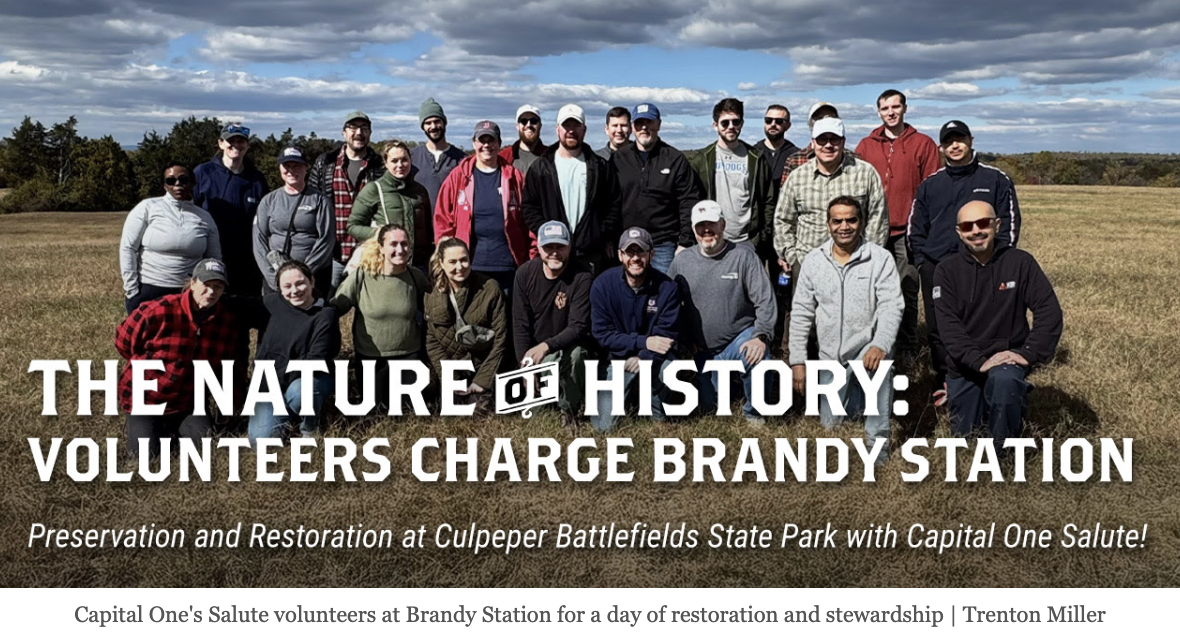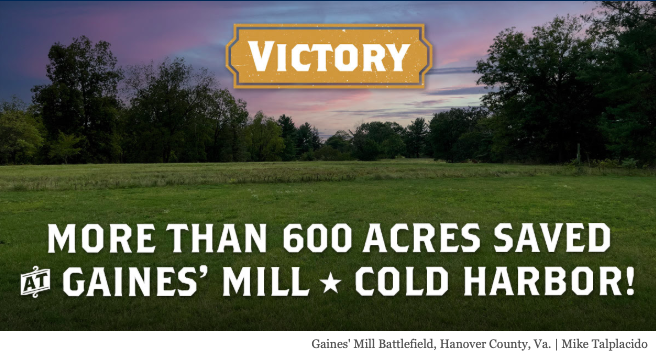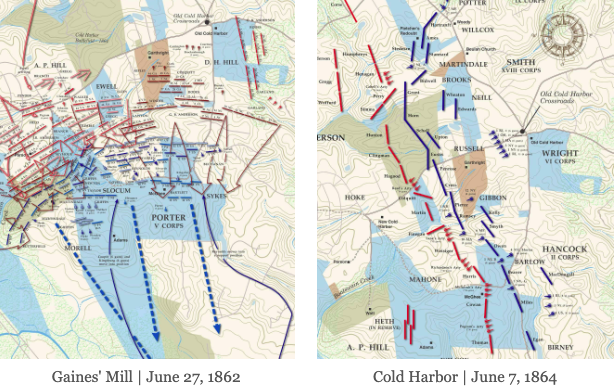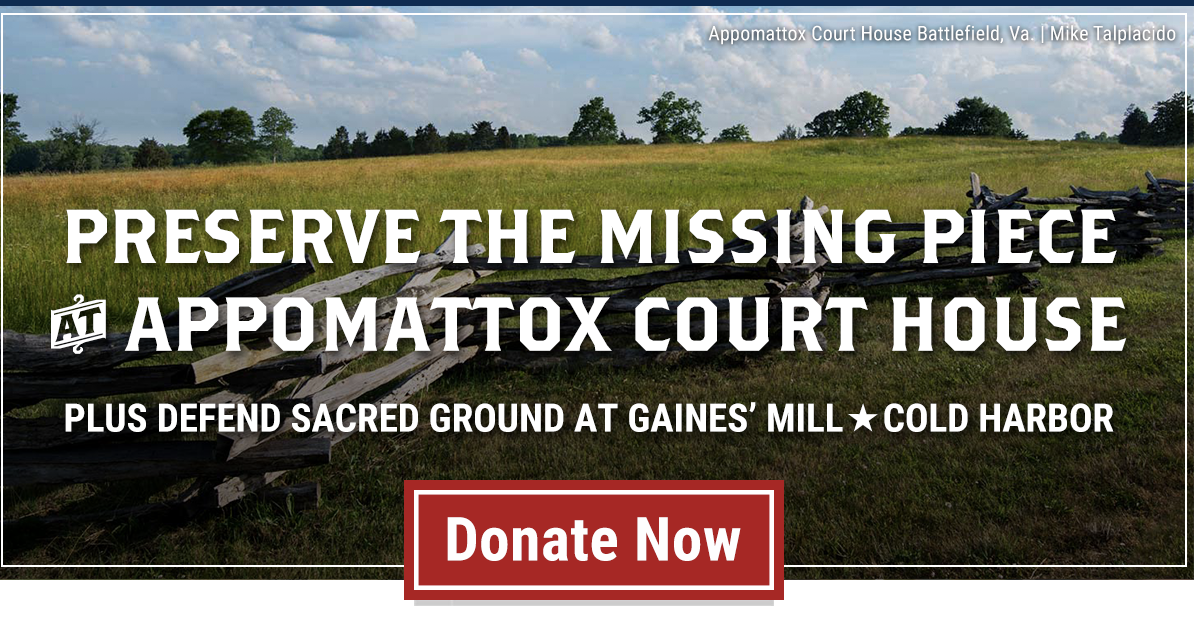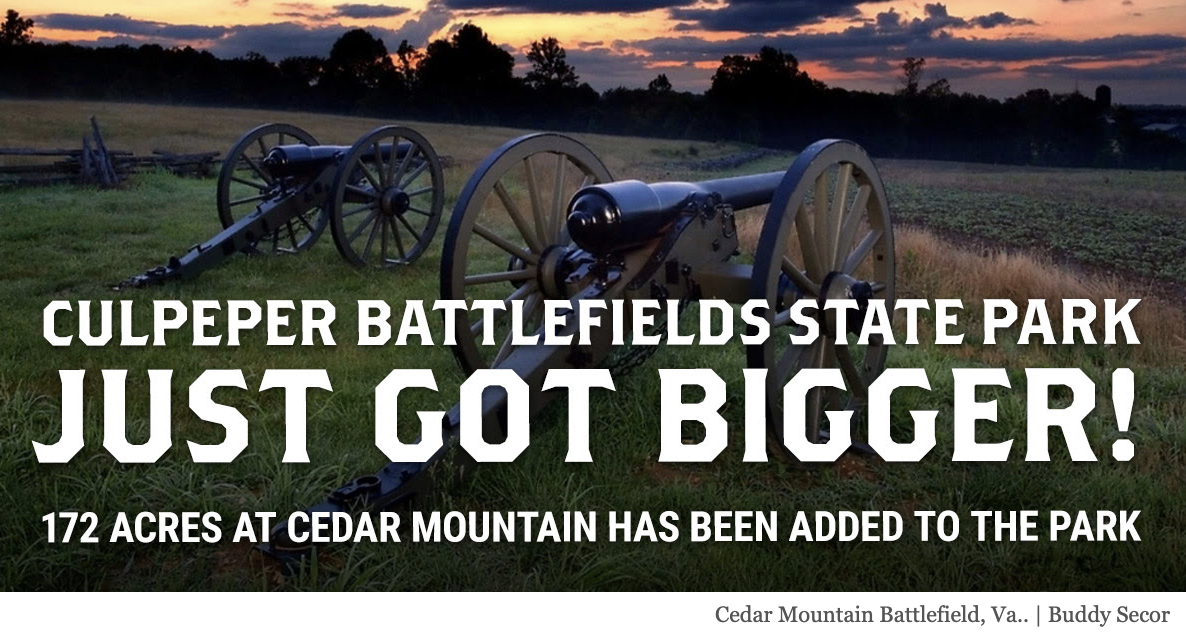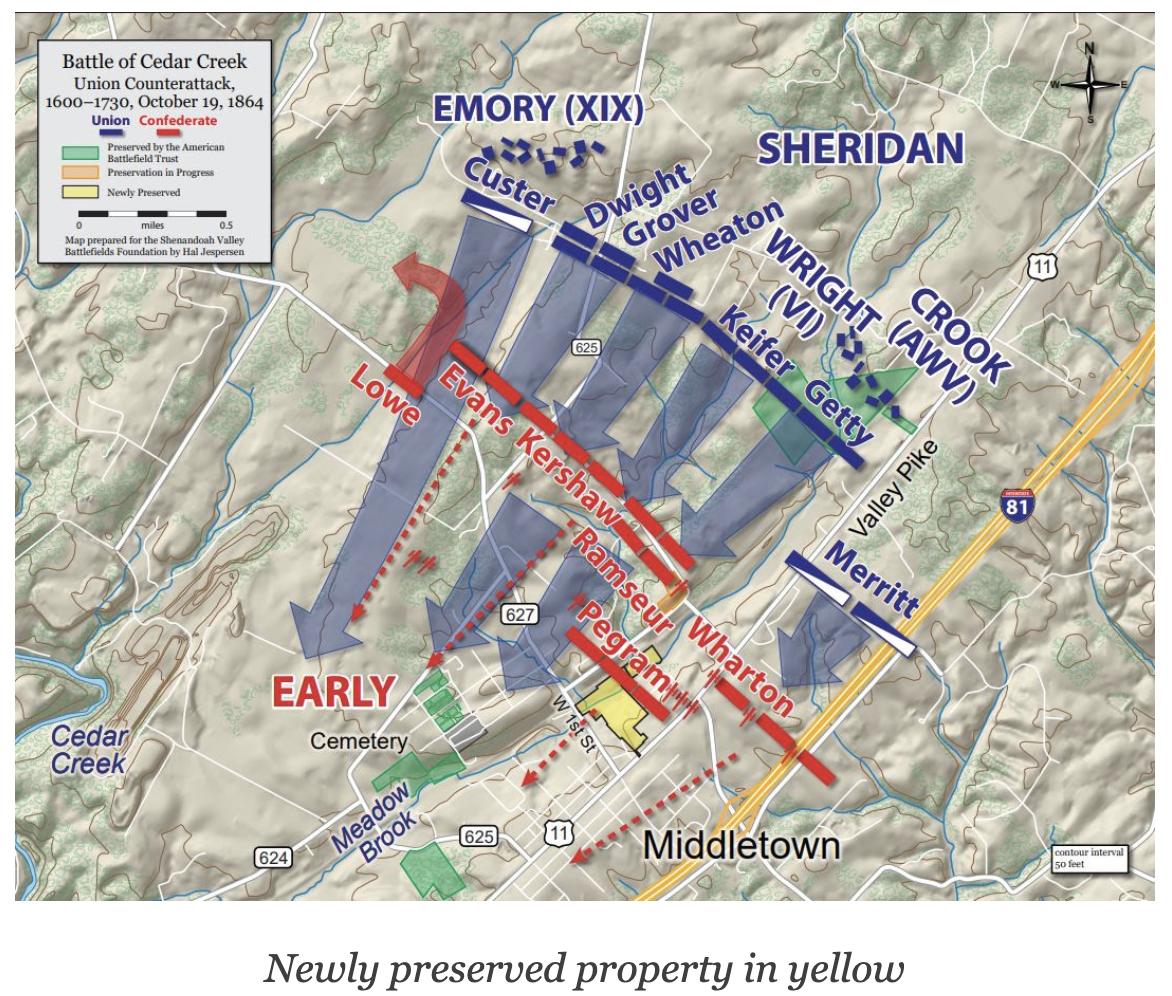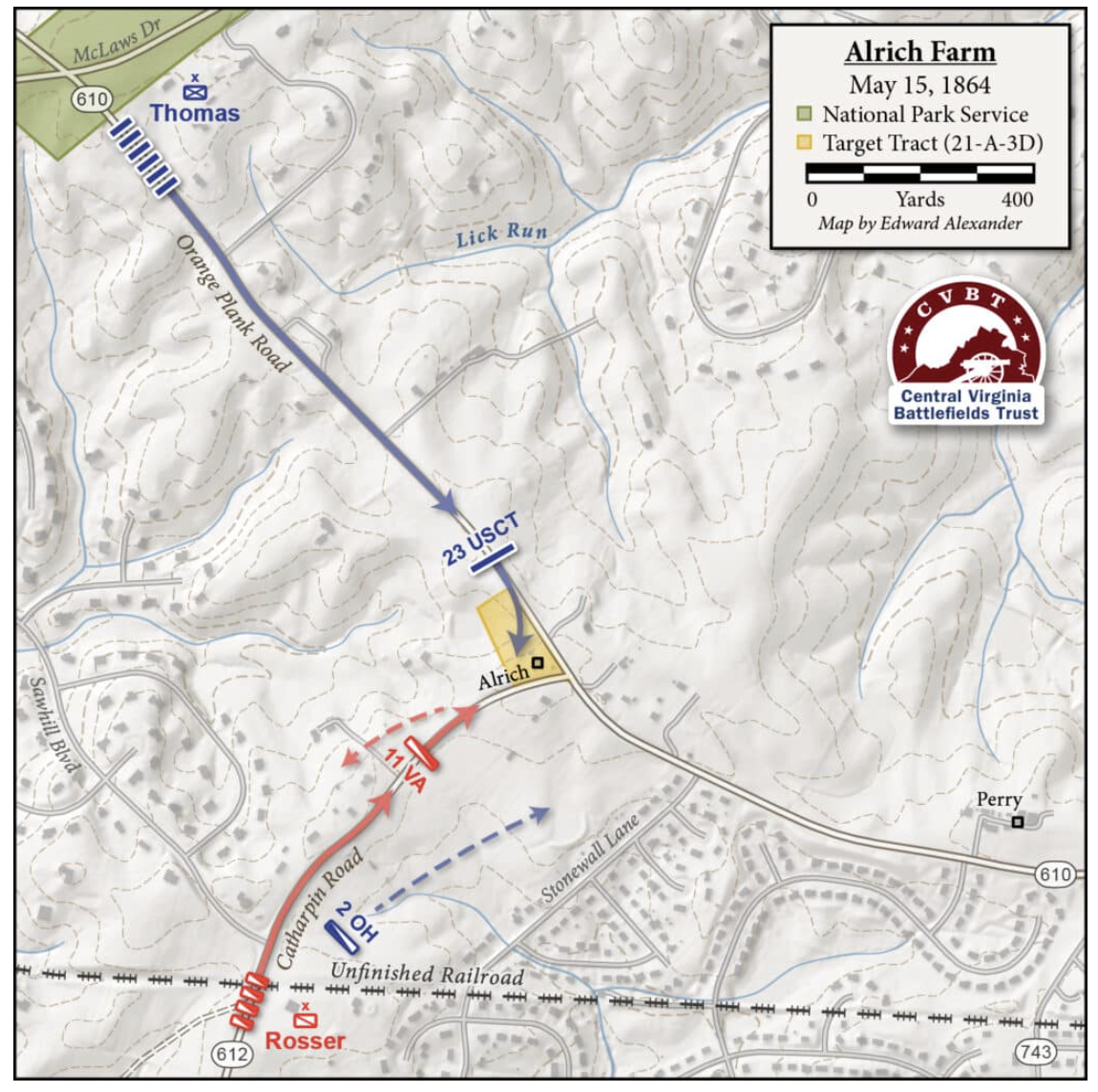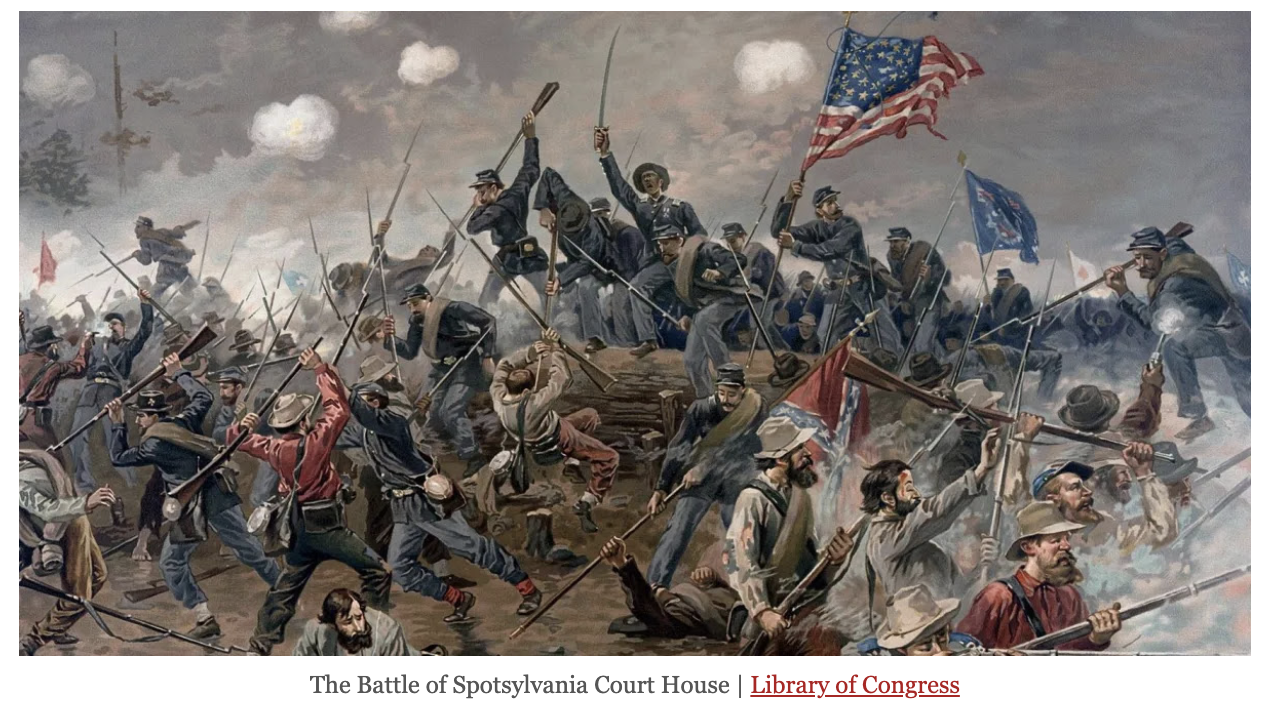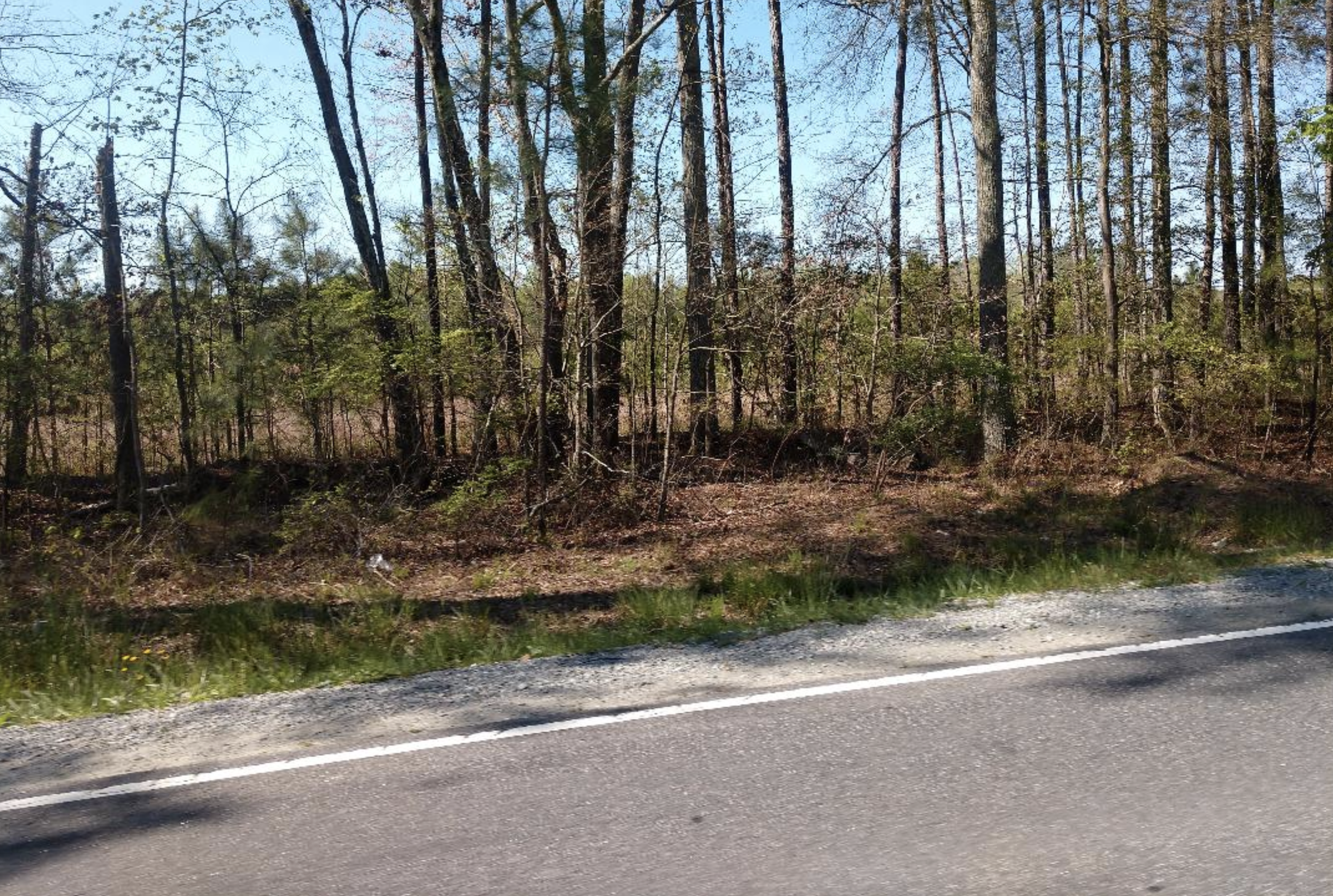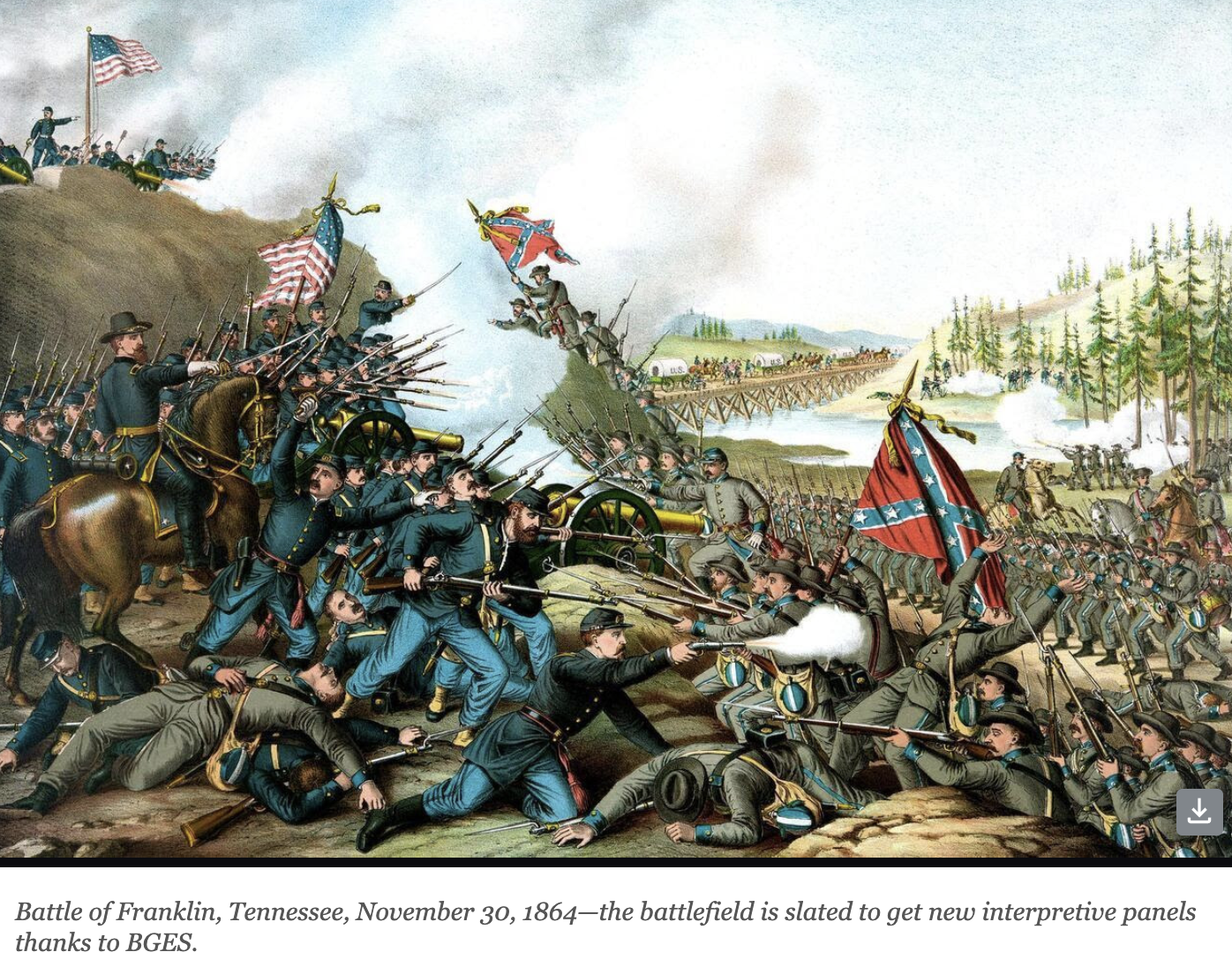For the fourth straight year, the American Battlefield Trust partnered with Capital One’s Salute Business Resource Group for a day of partnership and preservation. Around 50 volunteers joined Trust staff to help manage invasive weeds and overgrown vegetation encroaching on the historic Wiltshire House and stone wall on the Brandy Station Battlefield.
"The collaborative spirit of Capital One’s dedicated volunteers, working shoulder-to-shoulder with organizations like the American Battlefield Trust, is an effective way to ensure the memory and integrity of these hallowed grounds endures for generations," said Daniel Canchola, a volunteer with Capital One.
Invasive species can suppress native plants and take over the composition of an ecosystem. Volunteers received training and supervision in several safe and effective methods for controlling invasives, including multiflora rose, autumn olive and Japanese honeysuckle, helping to keep the battlefield's ecosystem thriving. This includes teaching volunteers what herbicides are safe for the environment, allowing people to put their training into practice and be stewards of the environment beyond the volunteer event.
Part of Culpeper Battlefields State Park, the Brandy Station Battlefield is best known as the site of the largest cavalry clash ever fought in the Western Hemisphere. Decades of diligent effort by the American Battlefield Trust, the Brandy Station Foundation, the Commonwealth of Virginia and preservation advocates have saved more than 2,100 acres from development. The work done by the Capital One volunteers helps keep the site a testament to the power of place offered by a battlefield.
“For all the great conversations and fun we had, we also got a tremendous amount of work done,” added Saielli. “Walking the property afterwards, I could not believe how much this group was able to accomplish.”
Capital One’s Salute group supports military associates as they continue their life of service outside of the military, providing community resources, volunteer opportunities and intersectional programming. Events in previous years have taken place on battlefields like Fredericksburg and Hatcher’s Run, and plans are already in the works for another volunteer event in 2026.
"It is a true privilege to work for a company that values giving back. I am honored to contribute to the preservation of our battlefields, ensuring that future generations can continue to learn about our history,” said Megan Wible, a Capital One volunteer.
The annual volunteer event with Capital One is just one example of the Trust’s Warrior Legacy program, which showcases the deep connections that today’s veterans and active-duty military retain to their historic forebearers. Through the initiative, the Trust has shared the stories of recipients of our nation’s highest military honor with the Medal of Honor Valor Trail, supported deeply impactful veterans’ archaeological work in partnership with American Veterans Archaeological Recovery (AVAR) and organized several volunteer events with veterans' groups, including for the Trust’s annual Park Day volunteer effort.

